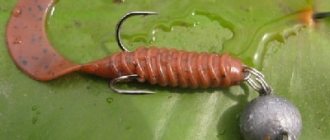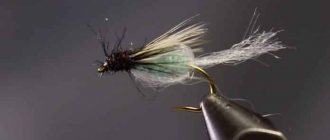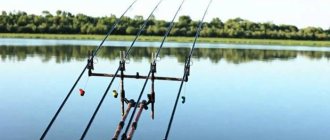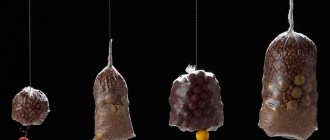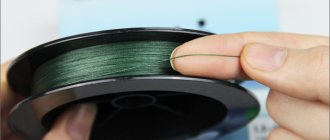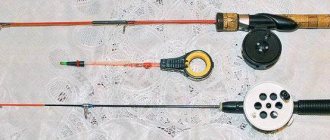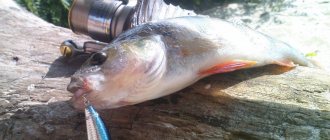Fly fishing is a type of fishing that uses artificial or live bait, usually a fly.
Fish quite often forage for food in the upper layer of water. The task is to cast a very light bait and not let it sink under the water. This is almost impossible using traditional gear. Any breeze will interfere with casting a light bait.
The solution to this problem gave rise to a method in which the bait is sent to the desired place not with the help of its own weight, but with the help of the weight of the cord, which is used instead of fishing line. This fishing method was called fly fishing.
Originally, fly fishing was used to catch trout and salmon. Today, this method has expanded its application range, and began to be used for fishing such fish as: chub, ide, perch, roach, pike perch, asp, carp, crucian carp, pike, bream. If desired, this list can be continued. Fly fishing is also used in sea fishing. Lures for sea fishing have a correspondingly different look and imitate, in addition to whitebait, shrimp and crab. In the sea, a variety of fish can grab the bait. There was a recorded case when a blue marlin became the prey of a fisherman.
The appearance of fly fishing dates back to the beginning of the 15th century. England can boast of the first mention of fishing using this method. It was in England that a treatise on this type of fishing was published; the document is dated 1495.
The opening of world competitions in a new sports direction: “Fly Fishing Casting” took place in 2010. And since 2018, the Russian Fly Fishing Cup has been held.
Fly fishing spots
According to those who are passionate about this type of fishing, a quiet and secluded place can be considered ideal. Pisces is very sensitive to the events happening around it. There is a high probability that any sound, even a quiet one, can reduce your chances to zero.
You need to choose places for fly fishing depending on what kind of fish you are going to catch. For trout, the usual environment is fast rivers, lakes and ponds with low water temperatures. You should look for taimen, lenok and grayling at the exit of the riffle. Perch and pike prefer coastal thickets and snags. They also like to stand at the exit from deep holes.
Much depends not so much on the place, but on the time of day (fish feed mainly in the early morning and evening). Weather conditions play a big role, and of course the time of year. When using fly fishing, you should pay attention not only to the water, but also to the shore. Don't forget that you need free space to cast.
For those who are starting to master this fishing method, we recommend the best place - your fence. The casting technique is quite complex, so it is worth practicing in a place where there is no possibility of catching or tangling the far-from-cheap tackle.
Sequence of gear assembly
How to assemble fly fishing tackle? It's quite simple:
- First, the reel is attached to the rod by means of a reel seat.
- Then, using a self-tightening loop, the backing is fixed to the reel spool and wound onto the spool.
- A piece of backing is attached to the cord using the “loop-to-loop” method; to do this, a surgical loop is knitted on it and connected to the loop of the cord. Some of the cords are made with ready-made loops, some without. The correct option for making a loop would be to use a heat-shrinkable tube and superglue (this connection can serve as a bite indicator when working with some flies).
- If necessary, you need to make the same loop at the second end of the cord, but on the undergrowth a loop can also be made by knitting a knot. The so-called “ideal loop” is excellent for this purpose.
- It is better to tie the thin end of the undergrowth with the leash in a knot. One of the most suitable is the bloody knot, but others can be used.
- The fly itself is tied to the leash with any knot familiar to the angler and suitable for thin fishing lines (an improved clinch is very popular in this part of the tackle).
There are no particular difficulties in preparing fly fishing gear for fishing. The subtleties of understanding the advisability of using certain cords, leaders and flies, depending on fishing conditions, will come with experience. The main thing for a beginner is to master the casting technique. Experienced fly fishermen recommend to do this, armed with a fishing rod, go out into an open space (a stadium is good) and practice your casting technique, using a cotton swab instead of a fly.
Fly fishing rods
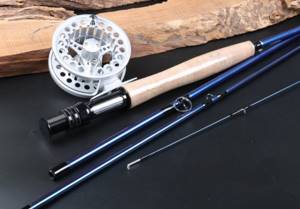
Those who are not familiar with this method of fishing, when they see a fly fishing rod, will consider it unusual. Short-circuited handle, unclear position of the coil (the handle is located above it). Let's try to figure it out in detail.
The rod is compound. Consists of several knees (from 2 to 4). Plug type connection.
The rod is equipped with:
- pass rings;
- reel seat;
- and handle;
The material for making pass rings is metal. Typically 5-11 rings are used. Various types of rings are used for equipment. This can be a traditional “snake” or an ordinary ring.
The placement of the reel, which is strange at first glance, is explained by the need for proper balancing of the gear. This is precisely the main difference between a rod designed for fly fishing and the rest. If you are only taking the first steps in mastering this fishing method, the location of the reel does not play any role.
The requirements for the material from which the shortened handle is made are simple - it should not be slippery.
Differences by rod class
There is the following classification of fly fishing rods:
- Class 0 - 2
short rods (length from 1.7 to 2.2 m) are lightweight. Used in fishing on small rivers. Included with the rod are light-weight dry and wet baits. Due to the characteristics of such a rod, it is impossible to cast long distances. - Class 3 - 4
length 2.0 - 2.6 m. The length of the rod allows you to cast over a distance of more than 10 m. Dry and wet type flies are used. It is possible to use loaded nymphs. - Class 0 - 4 rods
are recommended for beginner fly fishers. Very well suited for learning throwing and retrieve techniques. - Class 5 - 6
is used by fishermen who have mastered the skill of fishing using heavy baits. Length 2.5 – 2.9 m. It becomes possible to feed a fly and a medium-sized streamer at a distance of up to 25 m. They are used on rivers over 30 m wide and allow catching prey weighing over 2 kg. - Class 7 - 9
is used for catching large fish (salmon, taimen) in a wide reservoir. Length 4.5 m. Large weight baits can be used. Casting length up to 30 m. - Class 10 – 12
is used for sea fishing. A distinctive feature is high strength and flexibility, increased range.
Divided by material of manufacture:
- fiberglass;
- carbon fiber material (carbon);
- glued bamboo.
Fiberglass – the rod is durable and has sufficient flexibility. The most affordable price category. The disadvantage of this rod is its weight. The number of necessary casts during fishing is very high, and when casting with a heavy rod, a person simply gets tired. It is most often used where power and reliability are needed, namely in sea fishing.
Carbon fiber – Has sufficient flexibility and strength. The cost is higher than fiberglass rods. It is light in weight, which allows the fisherman using rods made of this material to get tired much less.
The disadvantages include:
- high electrical conductivity (not recommended for use during a thunderstorm or in the area where a power line passes);
- requires constant preventative maintenance.
Many manufacturers produce just such fishing rods, as they are the most popular due to their weight.
Rods made of laminated bamboo - this is the material used to make the first fly fishing rods. The high cost of such a product is explained by the fact that it is made by hand. Despite the complexity of maintenance, the presence of such a rod in the hands of a fly fisherman indicates that this is a professional.
How to assemble fly fishing tackle
Author: Pavel Kuptsov
Preparing fly fishing gear for fishing or casting training is an important and crucial moment, on which not only the effectiveness and comfort during the fishing process, but also the safety of all elements of the gear largely depend.
Each stage has its own nuances and tricks, knowing which you can quickly and efficiently prepare your fly fishing gear for fishing. To start fishing you will need:
- Assemble the rod
- Secure the reel
- Adjust the reel brake
- Thread the cord through the rings
- Connect the undergrowth to the cord
- Straighten the cord and undergrowth
- Tie the leash to the underbrush
- Tie the fly to the leader
- Prepare the fly for fishing
Below you will learn how to do all this correctly and not regret later about a broken rod, lack of bites or problems in casting.
ASSEMBLYING THE ROD When assembling your fly rod, keep in mind that many of them have docking marks for more precise and quick connection of the legs. They are located at the ends of each of the rod legs. It is easier to assemble the rod starting with thin knees. The last thing to connect is the knee to the handle. The rod is disassembled in the reverse order - from the thick knee to the thin one. To reduce the likelihood of dirt getting into the bushings of the rod knees (which accumulates over time at the bottom of the tube and case), it is recommended to remove them (rod knees) with the holes facing up. In this case we are talking about the first three knees, where there are holes. In this case, the last knee with the handle should be placed in the case/tube with the handle down. Otherwise, the rod placed in the case may not fit into tubes with a small diameter.
IMPORTANT! To avoid undocking of the knees of a fly fishing rod (and possible breakage of the rod because of this!) during fishing or practicing casting techniques, it is recommended to fasten the joints by wrapping them in a spiral with electrical tape with a 2 cm grip on each of the knees. If for one-handed gear this procedure is more of a recommendation, then for two-handed and switch gear, winding the joints is mandatory.
Secure the reel In the fly fishing, if you are right-handed, then the reel should face the left side, that is, winding is done with the left hand. If left-handed, then on the right. That is, during the fishing process, a right-handed person holds the rod with his right hand, and winds the cord with the reel with his left hand. For left-handed people, it’s the other way around: the left hand holds the rod, the right hand operates the reel. Keep this in mind when installing the reel on your rod. When reeling in the line or reeling in fish, the reel should not change its position - it is always located below the rod. Before threading the cord through the spool, make sure that the cord comes out on the correct side of the spool. That's right, this is when the cord goes straight from the spool to the first ring (strip ring) without bending over any of the sides of the reel.
IMPORTANT! Whenever you remove and put the spool on the reel, carefully check that the spool is properly fixed on the axis of the reel. If the spool is poorly secured, the spool may fly off the reel during fishing, which, if fishing in a fast current, will inevitably lead to the complete unwinding of the cord and backing from the spool and the likelihood of it getting jammed between the stones. If the spool falls on stones, it can lead to deformation of its sides and the impossibility of subsequent use of the reel.
ADJUSTING THE BRAKE SYSTEM OF THE REEL Almost all fly fishing reels have an adjustable braking system, which is adjusted according to two simple rules. First, with a properly adjusted brake, rewinding the cord should be easy and quick. Secondly, even with the most active and sharp winding of the cord, there should not be a “beard” on the reel, that is, it should not get tangled. In order to achieve this state, the setup should be done as follows. At the very beginning, completely loosen the brake system. Next, make half a turn with the brake system adjuster.
THREADING THE CORD INTO THE RINGS Having previously adjusted the brake of the reel, wind 6-7 meters of cord from it (read more about setting up the braking system). Take the cord in such a place that the distance between the reel and the place where the cord is grabbed is slightly greater than the length of the rod. Fold it in half at this point and thread it through the rings using the resulting loop. This is a classic way of threading the cord through the guide rings, which prevents it from slipping back if you accidentally let it out. Having threaded a loop from the cord into the last ring (tulip), pull out the remaining free part of the cord to the end, clearly in the direction of the continuation of the rod. Only with this direction will you eliminate the possibility of breaking the rod tip.
IMPORTANT! After threading the cord through the rings, it is strongly recommended to check whether the fly fishing cord is threaded through all the rings and whether it is accidentally wrapped around the rod. To do this, after threading the cord through the rings, grab the cord with your left hand at the level of the middle of the rod (you can even a little higher), spread your arms to the sides and pull the cord, creating a load in the rod. In this state, you will clearly see the cord where it is not threaded into the ring and where it is wrapped around the rod.
CONNECTING THE CORD WITH THE UNDERFLOWER
The most correct connection of the cord to the undergrowth is considered to be a loop-to-loop connection. To do this, there should be small loops at the ends of the cord and the leader. If in the purchased fly fishing set the leader is not connected to the cord, and there are no loops at the ends of the leader and the cord, then you can do it in two ways. The first is to tie the leader to the cord using a Nail Knot. However, in this case the connection will turn out to be blind, that is, without the possibility of changing the undergrowth in the future. The second and more correct way is to equip the end of the fly line with a connector (read more about this in this article), and form a loop on the leader using the Perfection Loop knot.
IMPORTANT! To connect the cord with the underbrush in a loop-to-loop manner correctly, follow these instructions - take the cord with your left hand and place its end with the loop horizontally in front of you. Next, take the leader with the Perfection Loop already formed and put the leader loop on the end of the cord. The next step is to thread the leader through the loop of the cord and pull it out to the end. Pull the connection of the cord with the undergrowth with a little force, bringing it to a compact state.
STRAIGHTENING THE CORD WITH THE UNDERFLOW Having threaded the cord through the rings, twist it a few more meters from the reel. Pay attention to the shape the line and undergrowth take when lying on the grass or surface of the water. If they gather into rings (spirals), this means that there is still “memory” from the coil in them and they should be straightened. To do this, you need to stretch the cord with undergrowth by hand, piece by piece. There is no need to stretch the entire cord; at whatever distance you catch, stretch that part. When subsequently lengthening during fishing, straighten the newly added part of the cord each time. All this will eliminate possible tangling of the cord when playing and shooting, and will also ensure maximum contact with the front sight during wiring.
ATTACHING THE LEASH The leash is a part of the fly fishing tackle to which the fly is directly attached. Performs the function of a consumable so that when replacing flies the undergrowth is not shortened. The leash should be no longer than 50-70 cm and no shorter than 35 cm.
There are several ways to attach a leash to the undergrowth:
- Using the loop-to-loop method, for this you need to create loops on the leader and leash
- Using the Blood Knot or Double Surgeon's Knot
- Using a forged connecting ring (Pitzenbauer ring)
TIING THE FLIGHT
There are several knot options for tying fly fishing flies to a leash. One of the most common is the Improved Clinch Knot, which is used to attach dry and wet flies, edgers and nymphs. A fly tied with such a knot is clearly fixed on the leash, without having freedom of movement.
To attach streamers and salmon flies, it is customary to use a loose loop, which ensures a more lively and attractive action of the bait during the posting process. In this case, knots like a Rapolov loop are used, where the front sight dangles freely on a small loop of 2-3 cm.
PREPARING FLIES FOR FISHING
Fly fishing flies are divided into two categories. The first category includes all surface flies - these are dry flies and edgers. The second includes flies that work underwater - these are nymphs, wet flies, streamers, salmon and sea flies.
In order for a fly to work correctly during the fishing process, be it a surface fly or a fly working in the water column, it must be prepared in a certain way.
All surface flies before fishing, as well as at some intervals during the fishing process itself, must be treated with flotate - a special silicone-based lubricant. The use of floatant prevents the fly from quickly getting wet, increasing its swimming ability several times, which is very important when fishing with dry flies and edgers. The longer and better the fly stays on the surface, the more useful retrieves the fly fisherman will be able to produce. You can read more about the process of treating surface flies with flotant in this article.
The second category of flies, which work underwater, requires completely different preparation. Streamers, nymphs, wet flies, sea flies and salmon flies must be wetted with water before fishing. And the more voluminous flies are used, the more necessary this procedure is.
© Fly fishing online store “FLY FISHING KITS.RU”
Article “How to properly assemble and prepare a set for fishing”
8
← To the previous article • Articles about fly fishing • To the next article →
Fly fishing reels
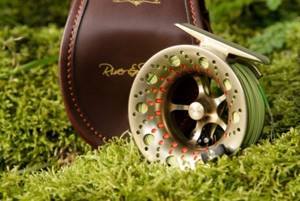
The reel used for fly fishing is a variation of the standard inertial type reel. Considering that it does not take part in the process of casting bait, it is necessary for simple storage of the cord. And of course, they use it to catch fish. The classification of reels corresponds to the selected fishing rod. Each rod corresponds to a reel of a certain class. Failure to follow this rule will result in unbalanced gear and, as a rule, worse casting. In addition, the fisherman’s hands get tired faster, which is also important. Reels use two types of brakes. “Ratchet”, used in a light class reel. It can only slow down the drum to prevent the cord from being thrown off.
Reel with powerful friction brake. Such a reel is necessary when hunting for serious trophies (salmon, taimen). There are types of reels equipped with sealed capsules that contain the braking system along with bearings. This prevents water from entering and maintains the effectiveness of the braking mechanism.
Material
This is a special type of fishing rod. Such fishing rods are made from the following materials:
- Fiberglass;
- Carbon fiber materials (modified carbon);
- Glued bamboo.
Fishing rods made of fiberglass are durable, flexible and quite affordable in price. This material has one significant drawback - its own weight. Fiberglass rods are heavy. A fisherman who has to almost constantly re-throw his tackle gets tired very quickly. Therefore, these days such rods are used mainly in sea fishing, in cases where power and reliability are required from the rod.
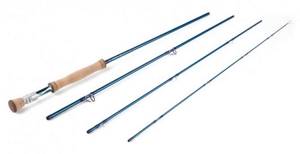
Carbon fiber rods are flexible and durable. They cost more than fiberglass rods. But they weigh much lighter. A fisherman can make many more casts without the slightest sign of fatigue. The disadvantages of this material are:
- high electrical conductivity (carbon fiber fishing rods are dangerous to use during thunderstorms and to fish under power lines);
- the need for constant preventative maintenance of the rod after fishing.
But these shortcomings more than pay off when fishing. Currently, most manufacturers produce fly fishing rods from carbon fiber.
Glued bamboo is an elite material. A wealthy professional fly fisherman can be identified by his fishing rod.
The very first fly fishing rods were made from laminated bamboo. These fishing rods are made by hand. During the production process, only high-quality varieties of bamboo are used, which are selected and polished exclusively by hand. This rod is quite expensive. And until now, bamboo rods are considered the elite fishing rods for this method of fishing, although they are difficult to operate and maintain.
Fly fishing line
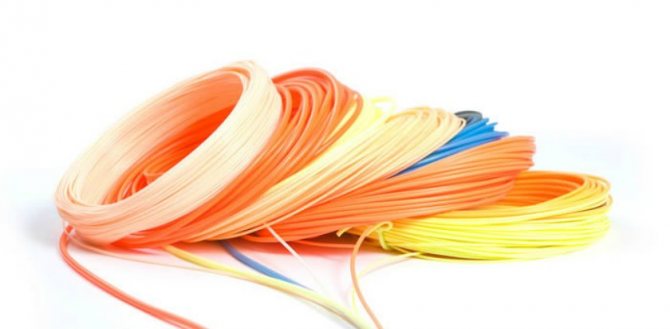
Fly fishing cord is an equally important and expensive part for this type of fishing. There are two variations: sinking and floating type. The floating option is much easier to cast, so we recommend it to novice fishermen.
The cord is classified similarly to the class of the fishing rod. When purchasing a cord in a store, be sure to pay attention to this. In terms of color, we recommend taking white, it is more noticeable in the water.
If you have used the line for fishing in dirty water, it is necessary to clean it. Cleaning is carried out with a special means. Most often, this product is included with a cord when sold.
Leader and leader for fly fishing
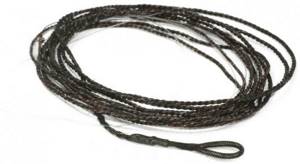
One of the main roles in fly fishing is played by undergrowth. It provides a gradual change in line thickness and helps the bait slowly sink to the surface of the water. The logical conclusion of the cord is the leash. The following requirements are imposed on it: it must be inconspicuous, but have sufficient strength when playing fish. We recommend taking several lines of different lengths for fishing. When casting in strong winds, a shortened leader will work much better.
Video: fly fishing for pike
Fly fishing is as exciting as other fishing methods. This type is considered one of the most difficult, but at the same time one of the most interesting. With each fishing trip comes more and more experience, which in the future will help you achieve the capture of the desired trophy using fly fishing tackle.
Views: 141
Similar articles:
- Spinning rod for pike: test, action, length, choice of budget model. Top 5 rods To successfully catch pike using various artificial baits, an angler will need…
- Spinning rod structure - what is it? Rod construction is one of the most common topics of discussion...
- How to choose a spinning rod for catching pike from the shore? Optimal rod length What should be the ideal spinning rod for coastal pike fishing?…
- Is it worth it to disassemble the spinning reel for lubrication yourself? Following the recommendations of “experienced” theoretical anglers from forums and blogs, some spinning anglers...
Fly fishing lures
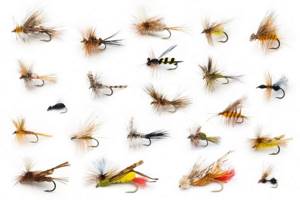
A classic lure for fly fishing can be called an artificial fly, but it is worth noting that the fly may not imitate a specific insect.
According to their external design and buoyancy, baits are divided into two categories:
- dry bait, includes land carrion and insects living in the upper layers of water;
- wet bait, which includes insects living in the depths of a reservoir and miniature fish, crustaceans and tadpoles.
If necessary, the use of live baits is permissible.
Fly fishing flies
Fly fishing flies are divided into the following types:
- dry fly;
- wet fly;
- nymph;
- streamer;
- emerger;
- fantasy.
Dry flies
create the illusion of an insect of any type (wasp, caddisfly, dragonfly) falling on the surface of the water. During manufacturing, the necessary buoyancy is taken into account. Purpose - fishing in the surface layers of the reservoir.
Wet fly
creates the illusion of a drowned insect or an insect living in the lower layers of a reservoir (crustaceans, water beetles, tadpoles, etc.) Nozzles of this type are distinguished by a thin body and wings directed towards the bend of the hook. May have noticeable insect legs and tail.
Nymph
- a copy of any insect at different stages of development (from pupa to larva).
Streamer
creates an imitation of a small fish. The purpose of bait is to catch big fish. A front sight that has solid weight and massiveness.
Emerger
- nymphs that copy insects at the time of development of a more adult form. The Emerger is distinguished by its lush, hairy form.
Fantasy nozzle
- most often these baits only remind the fish of edible objects. As a rule, there is no analogue to such a nozzle in nature. Nozzles are divided into types depending on their purpose. Today, the most popular baits are for fishing for grayling, salmon, and trout. I would like to point out that fly tying can be considered an art. There is information about competitions held in this discipline.
How to choose a front sight
The fisherman selects an artificial fly in accordance with the type of fish that interests him in the near future. Through years of experimentation, fishermen have determined the preferences of this or that fish. Based on this knowledge, baits are made that you can see in the store. When choosing, we recommend taking the advice of an experienced fisherman or listening to the seller’s recommendations.
Fly fishing. Rod selection
The rod must be selected carefully to ensure comfort during fishing. A good rod will allow you to control the progress of casting the fly, its control, you will be able to hook the fish in time, manage the line well and control its tension. With the “wrong” rod it will be much more difficult not to loosen the line even for a second. When buying a fishing rod, you need to decide exactly what size fish you will be catching in order to choose the right rod, and this is the most important element.
A fly fishing rod should be between 2.3 and 3 meters. The size of the rod depends on the size of the fish. Accordingly, for large fish, the rod is longer (especially when fishing for salmon). When transporting, it is convenient for the rod to be disassembled into 2-3 parts. The inserts in modern rods are mainly made of fiberglass - this improves its flexibility and efficiency. Telescopic rods are most convenient for transportation, but less durable for fly fishing.
The weight of the rod plays an equally important role. The muscles of the fisherman's body and arms get tired with numerous casts. New technologies make it possible to make fishing rods from lighter materials than was previously possible. Now the rod weighs only 64g, and in terms of its functions and characteristics it is even better than previous world brands, which weighed about 230g.

Fly fishing rods
The rod handle is an important component; in some models it reaches up to 10% of the length. It is made of cork, and on cheap models - of plastic. The rod has reel seats at the end of the handle, thanks to which the center of gravity shifts and this leads to less load on the hand. The ring that is subject to the heaviest load is the one that is erased by the cord; it is located on the edge of the rod. An insert made of agate or sintered carbides is placed in the ring to prevent premature wear of the ring. This factor does not affect the price of the rod.
All rods intended for fly fishing are divided into twelve classes . The rod should be more powerful, with a heavier bait and line (this is a distinctive feature of a spinning rod from a fly fishing rod).
Two rods that have different action can still be the same length and can belong to the same class. There are four tunings: slow, medium, fast and very fast. A rod with a slow action will allow you to cast the fly better. In windy conditions, it is best to fish with a fast action. Accordingly, medium action is a universal rod. There are also one-handed and two-handed fly fishing rods. In large areas and when catching large fish, two-handed rods are used. One-handed ones tend to have a wide range of uses. Much depends on the characteristics; some models are used for catching sea fish.
Based on all of the above. It can be concluded that line control, quality, casting accuracy and fish landing are the most important factors that you should pay attention to when choosing a fly fishing rod.
Fly fishing hooks
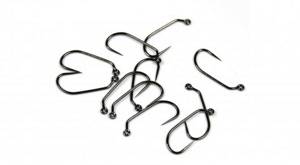
A fish hook is a very important component for fly fishing. The quality of attaching the bait to the leash and the natural behavior of the simulated insect on the water depend on the hook. They differ in shape and size.
Specialists involved in the independent production of fishing baits divide hooks into:
- by the length and shape of the forearm;
- in width;
- according to the diameter of the wire used.
Each of these points can be decisive in successful fishing. Fly fishing hooks should be selected based on the bait that will be used for fishing. The bait should not be too big for the hook and too small, everything should be harmonious, so the specific size of the hook is selected for the bait.
{banner_vnutri-kontenta-3}
